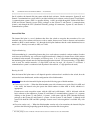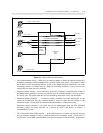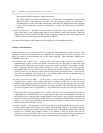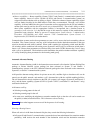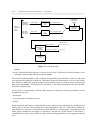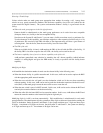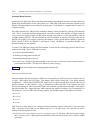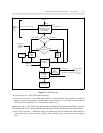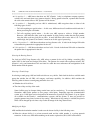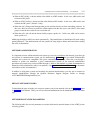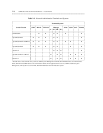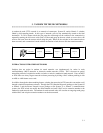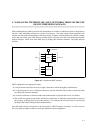2-16 COMMUNICATION SYSTEM NETWORKING — AN OVERVIEW
_ ___________________________________________________________________________________________________________________________
_ ___________________________________________________________________________________________________________________________
_ ___________________________________________________________________________________________________________________________
• 0 in position 1 — ARS knows that these are IXC (Generic 1 only) or telephone company operator-
assisted calls and sends them on to pattern selection. During pattern selection, a pattern that forwards
the calls to the central office or IXC operator will be chosen.
• 1 in position 1 — Depending on how ARS is administered, ARS recognizes these as either of the
following types of calls:
— Toll calls requiring no special action — In this case, ARS notes the toll condition and discards the 1
before processing the call further.
— Toll calls requiring special action — In this case, ARS expects to collect a 10-digit number.
However, ARS finds the office code in the number by digit position, rather than the digit pattern,
since the office code may look like an NPA. In areas that have office codes with a 0 or 1 as the
middle digit, the System 85 or Generic 2 must be set for this type of processing.
• 0 or 1 in position 2 — ARS knows that these are long distance calls. It looks in the foreign NPA table
to determine the pattern that is appropriate for the call.
• 2-9 in position 2 — ARS knows that these are local calls. It looks in the home NPA table to determine
the pattern that is appropriate for the call.
Selecting the Routing Pattern
For local and AT&T long distance calls, ARS selects a pattern for the call by finding a matching NPA
and/or NXX in the home and foreign NPA tables. The patterns for central office operator-assisted, IXC
(Generic 1 only), and international calls are found in a table that cross-references the configuration of the
dialed number with the pattern.
Selecting a Trunk Group
In selecting a trunk group, ARS and AAR activities are very similar. Both look for the first available trunk
group that satisfies the call FRL, call category, and bearer capability. In addition, ARS considers the
following when it chooses a trunk group preference for a call:
• Whether the call is toll-free.
• The time-of-day and day of the week.
Some facilities may be cheaper during certain hours and on certain days. To accommodate this daily
fluctuation, ARS blocks patterns to into groups, called plans. Depending upon the communication
system, up to 3 ARS plans can be designed on the DIMENSION, System 85, and Generic 2; up to 8 plans
are available on the Generic 1 communications systems; and the System 75 does not provide for
grouping patterns into plans for time-of-day routing. When time-of-day routing is available, the plan in
effect can be changed up to 6 times a day to take advantage of the long distance rates.
Modifying the Digits
ARS modifies the destination number it sends over the chosen facility in the following cases:
• When the chosen facility is a private network trunk and the called number is a private network
extension. In this case, ARS subnet trunking can be used to replace the (NPA) NXX with an RNX.



